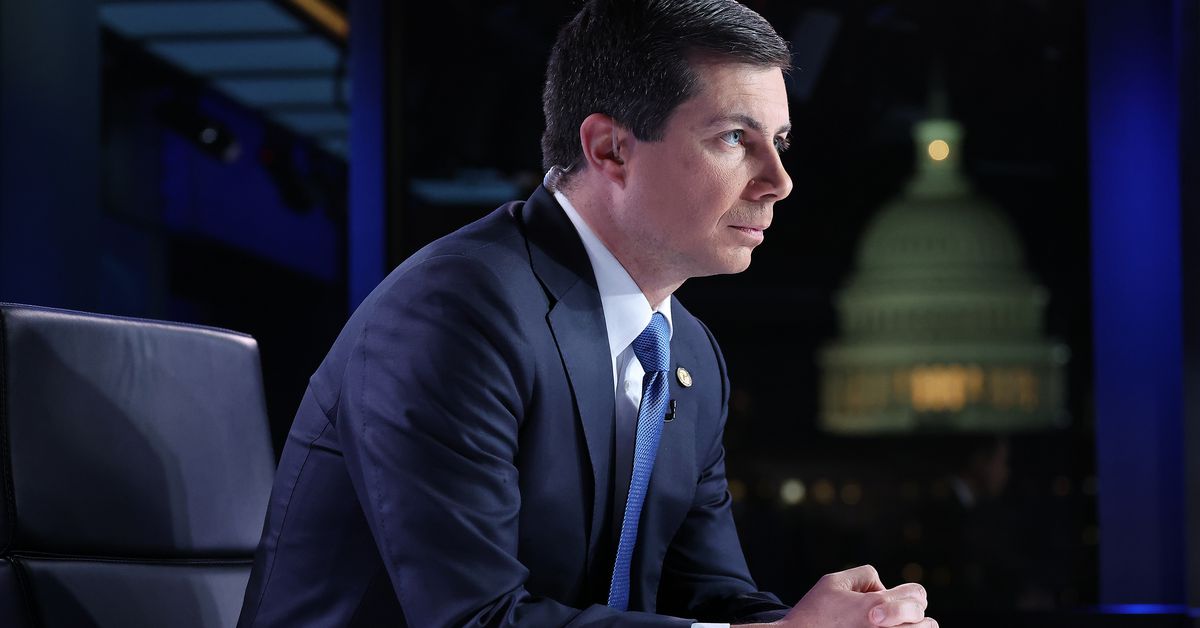The FAA is struggling. Who can save it?
All eyes are on the Department of Transportation and the FAA. | Paul Morigi/Getty ImagesThe Federal Aviation Administration needs some tech support. Before any flight takes off, pilots are supposed to read a Notice to Air Missions (NOTAM) that...

Before any flight takes off, pilots are supposed to read a Notice to Air Missions (NOTAM) that outlines any potential safety problems they might encounter during their flight. Full of numerical codes and special acronyms, these critical digital messages include warnings about disruptions like bad weather conditions, traveling flocks of birds, and even nearby rocket launches. But as an outage that grounded thousands of flights across the US last week made clear, the NOTAM system is also fragile.
The root of the problem appears to be a computer operating system that the Federal Aviation Administration has used to relay NOTAMs for the past three decades. The FAA is still reviewing what went wrong, but it believes that “personnel” — reportedly two contractors who didn’t follow procedures — uploaded a damaged file to the computer system that sends NOTAMs to pilots. The agency initially tried to fix the issue without causing a major impact to flight schedules, but ended up ordering a hold on all flight takeoffs in the US that lasted over an hour — a scale of disruption not seen since the agency grounded all flights during the 9/11 terrorist attacks.
This looks really bad for the FAA, which has struggled to keep up financially and technically as the number of people flying continues to surge. Scrutiny of the agency and the airlines it regulates has only grown over the past several years, especially amid an ongoing pilot shortage, surging fuel prices, rising tensions over working conditions, and increasingly problematic IT systems. Now, whether the FAA can provide the aviation industry with the right course correction depends on overcoming the growing politicization of, well, planes.
Unfortunately, the fate of the FAA lies with an increasingly chaotic Congress, which controls the agency’s funding. Earlier this month, one Republican House member proposed setting up an Office of Advanced Aviation to develop systems that are better suited to future aviation tech, and the Senate Commerce Committee now has plans to investigate how the NOTAM issue happened. The recent tumult has also drawn attention to the fact that the FAA doesn’t have a permanent administrator. President Joe Biden nominated Phillip Washington, the current CEO of the Denver International Airport, back in July, but the Senate still hasn’t scheduled a confirmation hearing. Meanwhile, the FAA’s current authorization bill, which provides the funding that the agency uses to do its work, will expire at the end of September unless Congress acts. The FAA’s current budget is less than it was in 2004, after accounting for inflation.
”This is hopefully a wake-up call to Congress to really give the funding that many of us have been calling for in the FAA to help modernize their system,” Georgia Tech engineering professor and aviation expert Laurie Garrow told Recode. “As our transportation system has grown — as we’ve gotten new threats, frankly, against our technologies — this is needed when we’re pushing the boundaries of what the system can do.”
The FAA’s technical problems aren’t a surprise. Last year, the agency asked for nearly $30 million to fix the tech that supports the NOTAM system. There had already been complaints from within the aviation industry that NOTAMs have become obsolete, and that the messages are too long and overloaded with useless information. The manual backup system doesn’t seem all that great, either. After the NOTAM computer system went down last Wednesday, air traffic controllers reportedly had to share whatever information may have been relayed in the digital NOTAMs verbally. Functionally, this meant reverting to radio transmissions and phone calls — the technology that the FAA used before the agency got computers.
There’s other evidence that the agency needs a serious tech overhaul. Hundreds of flights across the East Coast were canceled in August 2015 because of a technical glitch at an air traffic control center in Virginia. And last year, the rollout of 5G threatened to disrupt the entire airline industry after the FAA raised concerns that the new wireless service could interfere with the radio altimeters used by planes during landing. There is an effort to update the air traffic control system and the National Airspace System (NAS), but the transition has encountered hurdles and is still ongoing.
The technical issues go beyond just one federal agency. Hours after the NOTAM outage in the US, Canada’s air traffic management service encountered the same problem. And last month, a failure exacerbated by aging software that Southwest Airlines relies on to schedule workers led to the cancellation of thousands of flights, leaving passengers without flight crews and flight crews without passengers. It wasn’t the first time the airline has dealt with tech issues.
:no_upscale()/cdn.vox-cdn.com/uploads/chorus_asset/file/24370171/GettyImages_1246155119.jpg) Flights were delayed until the FAA could overcome problems with the NOTAM system.Ed Jones/AFP via Getty Images
Flights were delayed until the FAA could overcome problems with the NOTAM system.Ed Jones/AFP via Getty Images
As Congress mulls its next move with the FAA, debate over where to lay the blame is heating up on both sides of the aisle. Republicans are busy criticizing Secretary of Transportation Pete Buttigieg, a potential 2025 presidential candidate. But the Revolving Door Project, a research group that investigates corporate influence on the executive branch, has suggested that issues at the FAA may stem from the Trump administration — although it also noted that Buttigieg was responsible for “the personnel decisions about who was overseeing the situation.” In response to the fiasco, Buttigieg has said that there should be “enough safeguards built into the system” that a single person’s error or mistake can’t have such an enormous impact on US aviation.
“It’s been partisan at least since the 1950s,” Janet Bednarek, a history professor at the University of Dayton, told Recode. “Arguments over what is the responsibility of the government? What is the responsibility of the airlines who use this system or the private pilots who use the system? The politics have been there since early on, and then you throw those into a highly partisan political environment like we have today.”
It’s not clear where the battle over the FAA’s future will go next. While Democrats have used the fiasco to double down on their support for Biden’s nominee, Phillip Washington, Republicans are still raising objections. Their latest criticism is an emerging argument that Washington, a retired Army command sergeant major, doesn’t technically qualify as a civilian. The law apparently requires that the FAA administrator be a civilian or receive a “military waiver” from Congress.
Of course, there’s also a reasonable explanation why NOTAM updates haven’t happened organically. The technology has been tested by time, and pilots know their way around this system on its best days and on its worst. They can’t say the same of something they haven’t used yet.
“You know what can go wrong with the system that you have,” explained Bednarek. “You don’t know what can go wrong with the new system.”
This story was first published in the Recode newsletter. Sign up here so you don’t miss the next one!

 Koichiko
Koichiko 
































